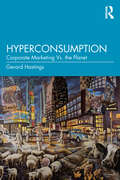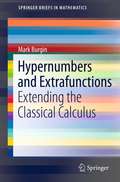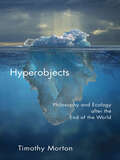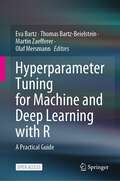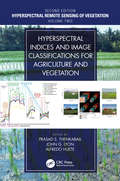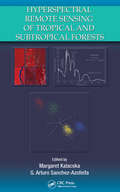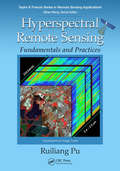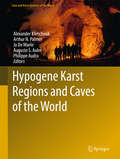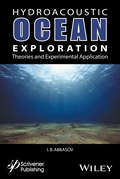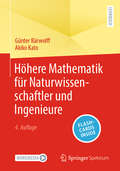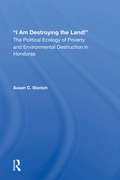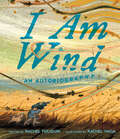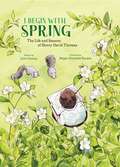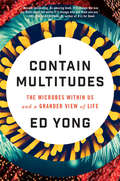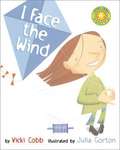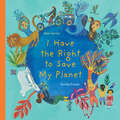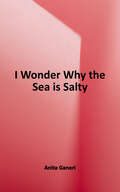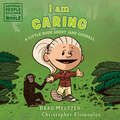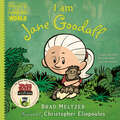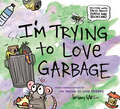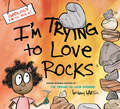- Table View
- List View
Hyperconsumption: Corporate Marketing vs. the Planet
by Gerard HastingsDiving deep into the world of corporate marketing, this incisive and eye-opening work shows how, in the hands of the corporation, business has become manipulative, divisive and disastrously at odds with the needs of the natural world. It calls on us to rethink and rebel. The corporate marketing blitz is driven by a simple economic truth: profits depend on demand always exceeding supply. A multi-billion-dollar global industry has therefore been created with the sole aim of turning us into devout consumers. Gerard Hastings invites us to explore alternatives to a system that is threatening our survival. He explores what it is to be human, how marketing can be used to do good rather than harm and the potential of alternative models that empower us to be citizens, not just consumers. Professionals and students in the business, marketing, public health, environmental and political sectors – as well as concerned citizens who know that business as usual is not an option – will value this accessible guide to what is going wrong with our current business models and how these failings can be addressed.
Hypernumbers and Extrafunctions
by Mark Burgin"Hypernumbers and Extrafunctions" presents a rigorous mathematical approach to operate with infinite values. First, concepts of real and complex numbers are expanded to include a new universe of numbers called hypernumbers which includes infinite quantities. This brief extends classical calculus based on real functions by introducing extrafunctions, which generalize not only the concept of a conventional function but also the concept of a distribution. Extrafucntions have been also efficiently used for a rigorous mathematical definition of the Feynman path integral, as well as for solving some problems in probability theory, which is also important for contemporary physics. This book introduces a new theory that includes the theory of distributions as a subtheory, providing more powerful tools for mathematics and its applications. Specifically, it makes it possible to solve PDE for which it is proved that they do not have solutions in distributions. Also illustrated in this text is how this new theory allows the differentiation and integration of any real function. This text can be used for enhancing traditional courses of calculus for undergraduates, as well as for teaching a separate course for graduate students.
Hyperobjects: Philosophy and Ecology after the End of the World (Posthumanities)
by Timothy MortonHaving set global warming in irreversible motion, we are facing the possibility of ecological catastrophe. But the environmental emergency is also a crisis for our philosophical habits of thought, confronting us with a problem that seems to defy not only our control but also our understanding. Global warming is perhaps the most dramatic example of what Timothy Morton calls &“hyperobjects&”—entities of such vast temporal and spatial dimensions that they defeat traditional ideas about what a thing is in the first place. In this book, Morton explains what hyperobjects are and their impact on how we think, how we coexist with one another and with nonhumans, and how we experience our politics, ethics, and art. Moving fluidly between philosophy, science, literature, visual and conceptual art, and popular culture, the book argues that hyperobjects show that the end of the world has already occurred in the sense that concepts such as world, nature, and even environment are no longer a meaningful horizon against which human events take place. Instead of inhabiting a world, we find ourselves inside a number of hyperobjects, such as climate, nuclear weapons, evolution, or relativity. Such objects put unbearable strains on our normal ways of reasoning. Insisting that we have to reinvent how we think to even begin to comprehend the world we now live in, Hyperobjects takes the first steps, outlining a genuinely postmodern ecological approach to thought and action.
Hyperparameter Tuning for Machine and Deep Learning with R: A Practical Guide
by Thomas Bartz-Beielstein Eva Bartz Martin Zaefferer Olaf MersmannThis open access book provides a wealth of hands-on examples that illustrate how hyperparameter tuning can be applied in practice and gives deep insights into the working mechanisms of machine learning (ML) and deep learning (DL) methods. The aim of the book is to equip readers with the ability to achieve better results with significantly less time, costs, effort and resources using the methods described here. The case studies presented in this book can be run on a regular desktop or notebook computer. No high-performance computing facilities are required. The idea for the book originated in a study conducted by Bartz & Bartz GmbH for the Federal Statistical Office of Germany (Destatis). Building on that study, the book is addressed to practitioners in industry as well as researchers, teachers and students in academia. The content focuses on the hyperparameter tuning of ML and DL algorithms, and is divided into two main parts: theory (Part I) and application (Part II). Essential topics covered include: a survey of important model parameters; four parameter tuning studies and one extensive global parameter tuning study; statistical analysis of the performance of ML and DL methods based on severity; and a new, consensus-ranking-based way to aggregate and analyze results from multiple algorithms. The book presents analyses of more than 30 hyperparameters from six relevant ML and DL methods, and provides source code so that users can reproduce the results. Accordingly, it serves as a handbook and textbook alike.
Hyperspace: A Scientific Odyssey Through Parallel Universes, Time Warps, and the Tenth Dimension
by Michio KakuAre there other dimensions beyond our own? Is time travel possible? Can we change the past? Are there gateways to parallel universes? All of us have pondered such questions, but there was a time when scientists dismissed these notions as outlandish speculations. Not any more. Today, they are the focus of the most intense scientific activity in recent memory. In Hyperspace, Michio Kaku offers the first book-length tour of the most exciting (and perhaps most bizarre) work in modern physics. <p><p>The theory of hyperspace (or higher dimensional space)—and its newest wrinkle, superstring theory—stand at the center of this revolution, with adherents in every major research laboratory in the world. Beginning where Hawking's Brief History of Time left off, Kaku paints a vivid portrayal of the breakthroughs now rocking the physics establishment. Why all the excitement? As the author points out, for over half a century, scientists have puzzled over why the basic forces of the cosmos—gravity, electromagnetism, and the strong and weak nuclear forces—require markedly different mathematical descriptions. But if we see these forces as vibrations in a higher dimensional space, their field equations suddenly fit together like pieces in a jigsaw puzzle, perfectly snug, in an elegant, astonishingly simple form. This may thus be our leading candidate for the Theory of Everything.
Hyperspectral Indices and Image Classifications for Agriculture and Vegetation (Hyperspectral Remote Sensing of Vegetation, Second Edition)
by Prasad S. Thenkabail, John G. Lyon and Alfredo HueteWritten by leading global experts, including pioneers in the field, the four-volume set on Hyperspectral Remote Sensing of Vegetation, Second Edition, reviews existing state-of- the-art knowledge, highlights advances made in different areas, and provides guidance for the appropriate use of hyperspectral data in the study and management of agricultural crops and natural vegetation.Volume II, Hyperspectral Indices and Image Classifications for Agriculture and Vegetation evaluates the performance of hyperspectral narrowband or imaging spectroscopy data with specific emphasis on the uses and applications of hyperspectral narrowband vegetation indices in characterizing, modeling, mapping, and monitoring agricultural crops and vegetation. This volume presents and discusses topics such as the non-invasive quantification of foliar pigments, leaf nitrogen concentration of cereal crop, the estimation of nitrogen content in crops and pastures, and forest leaf chlorophyll content, among others. The concluding chapter provides readers with useful guidance on the highlights and essence of Volume II through the editors’ perspective.Key Features of Volume II: Provides the fundamentals of hyperspectral narrowband vegetation indices and hyperspectral derivative vegetation indices and their applications in agriculture and vegetation studies. Discusses the latest advances in hyperspectral image classification methods and their applications. Explains the massively big hyperspectral sensing data processing on cloud computing architectures. Highlights the state-of-the-art methods in the field of hyperspectral narrowband vegetation indices for monitoring agriculture, vegetation, and their properties such as plant water content, nitrogen, chlorophyll, and others at leaf, canopy, field, and landscape scales. Includes best global expertise on hyperspectral remote sensing of agriculture, crop water use, plant species detection, crop productivity and water productivity mapping, and modeling.
Hyperspectral Remote Sensing of Tropical and Sub-Tropical Forests
by Margaret Kalacska G. Arturo Sanchez-AzofeifaWhile frequently used in temperate environments, hyperspectral sensors and data are still a novelty in the tropics. Exploring the potential of hyperspectral remote sensing for assessing ecosystem characteristics, Hyperspectral Remote Sensing of Tropical and Sub-Tropical Forests focuses on the complex and unique set of challenges involved in using t
Hyperspectral Remote Sensing: Fundamentals and Practices (Remote Sensing Applications Series)
by Ruiliang PuAdvanced imaging spectral technology and hyperspectral analysis techniques for multiple applications are the key features of the book. This book will present in one volume complete solutions from concepts, fundamentals, and methods of acquisition of hyperspectral data to analyses and applications of the data in a very coherent manner. It will help readers to fully understand basic theories of HRS, how to utilize various field spectrometers and bioinstruments, the importance of radiometric correction and atmospheric correction, the use of analysis, tools and software, and determine what to do with HRS technology and data.
Hypogene Karst Regions and Caves of the World
by Alexander Klimchouk Arthur N. Palmer Jo De Waele Augusto S. Auler Philippe AudraThis book illustrates the diversity of hypogene speleogenetic processes and void-conduit patterns depending on variations of the geological environments by presenting regional and cave-specific case studies. The cases include both well-known and newly recognized hypogene karst regions and caves of the world. They all focus on geological, hydrogeological, geodynamical and evolutionary contexts of hypogene speleogenesis. The last decade has witnessed the boost in recognition of the possibility, global occurrence, and practical importance of hypogene karstification (speleogenesis), i. e. the development of solutional porosity and permeability by upwelling flow, independent of recharge from the overlying or immediately adjacent surface. Hypogene karst has been identified and documented in many regions where it was previously overlooked or misinterpreted. The book enriches the basis for generalization and categorization of hypogene karst and thus improves our ability to adequately model hypogene karstification and predict related porosity and permeability. It is a book which benefits every researcher, student, and practitioner dealing with karst.
Hyrdoacoustic Ocean Exploration: Theories and Experimental Application
by Iftikhar B. AbbasovThe only book that offers a comprehensive and fully up-to-date coverage of hydroacoustic ocean exploration, this work deals with the diagnostics of non-uniformities in a water medium using the hydroacoustic parametric antenna. The non-uniformities of the water medium in the study are of geometrically regular shape, i.e., the shape of a sphere, a cylinder, and a spheroid. An account is given of theoretical and experimental studies of wave processes that occur in the event of the scattering of non-linearly interacting acoustic waves at a sphere, a cylinder, and a spheroid. Scattering problems are formulated; solutions to the inhomogeneous wave equation are found in the first and second approximations using the successive approximations method. For the first time, high-frequency asymptotic expressions of acoustic pressure for all spectral components of the secondary field are obtained for the nonlinear scattering problem. The scattering diagrams are calculated and plotted, and then analyzed and compared. Results of experimental studies of the parametric acoustic antenna field scattering at solid steel spheres are presented. Experimental scattering diagrams both for the parametric antenna pump waves and for the secondary field waves including the difference frequency wave, the sum frequency wave, and the second harmonic wave are presented. 3D modeling of wave processes is also considered. A must have for researchers and specialists in nonlinear hydroacoustics and ocean acoustics; it also may be of use for postgraduates and students specializing in hydroacoustics and ocean exploration.
Hábitats del mundo (Habitats of the World): Un viaje por los ecosistemas de la Tierra
by DK- Contiene 14 impresionantes ilustraciones CGI a doble página, repletas de la vida vegetal y animal.- Este maravilloso formato ha vendido más de 770.000 ejemplares en todo el mundo.Un viaje ilustrado a través de los hábitats más sorprendentes de la Tierra, desde bosques y océanos hasta desiertos y polos helados.Ilustrado con increíble detalle, Hábitats del mundo explora los principales ecosistemas de la Tierra y las diferentes comunidades de animales y plantas que viven en cada uno. Desde una abundante selva tropical hasta las condiciones hostiles de alta montaña o los polos helados, descubre cómo los animales y las plantas se adaptan a su entorno y cómo interactúan con su entorno y entre ellos.------------------------- Shows 14 panoramic CGI artworks show each major habitat teeming with life.- In the same lavish, landscape format as the successful Through Time series, which has sold over 770,000 worldwide.Beautifully detailed panoramic artworks show each major habitat teeming with life—each scene is packed with drama and intricate details to pore over.
Höhere Mathematik für Naturwissenschaftler und Ingenieure
by Günter Bärwolff Akiko KatoDieses Lehrbuch wendet sich an Studierende der Ingenieur- und Naturwissenschaften und stellt die gesamte Höhere Mathematik, wie sie üblicherweise im Grundstudium behandelt wird, in einem Band zusammen.Ausgangspunkt ist dabei stets die Frage, womit Ingenieure und Naturwissenschaftler in ihrer Arbeit konfrontiert werden, wie z. B. die Modellierung und Optimierung technischer Prozesse oder die Beschreibung physikalischer Gesetzmäßigkeiten. Das Werk erschließt systematisch die zugrunde liegenden mathematischen Themen, ausgehend von der Schulmathematik über die Lineare Algebra bis hin zu partiellen Differenzialgleichungen. Den Autoren gelingt eine in sich geschlossene und didaktisch eingängige Darstellung der Höheren Mathematik, wobei Beweise nur angegeben werden, wenn sie für das Verständnis hilfreich sind. Alle neu eingeführten Begriffe werden durch Abbildungen oder Beispiele veranschaulicht. Eine Vielzahl von Übungsaufgaben (mit Lösungen im Internet)erleichtern die Vertiefung des Lernstoffs.Für die vorliegende 4. Auflage wurde das Werk vollständig durchgesehen und u.a. um das Thema mathematische Grundlagen des Deep Learning ergänzt.Plus: Zudem erhalten Sie Zugang auf ca. 150 Flashcards (Springer-Nature-Flashcards-App), mit denen Sie die Inhalte auf spielerische Weise einüben können.
I Am Destroying The Land!: The Political Ecology Of Poverty And Environmental Destruction In Honduras
by Susan C StonichThis book is about interconnections-those among the historical, geographic, demographic, social, economic, and ecological aspects of development-as well as how Central Americans struggle with the interplay of increasing poverty and environmental degradation. Centering on the case of southern Honduras and expanding to include the Central American region, Susan Stonich's analysis employs an integrative approach that builds on a strong and varied methodological foundation to encompass both political economy and ecology. Stonich examines the systemic linkages among the dynamics of dominant development models and associated patterns of capitalist accumulation, regional demography, rural impoverishment, and environmental decline. By casting the discussion against the backdrop of southern Honduras, she presents a powerful historical record of how larger socio-political communities impact individuals and the natural environment and how, in turn, people respond. She charts the destiny of peasant groups within the dynamics of contemporary capitalism, recognizing that the fates of the peasantry and the natural environment are intimately linked. Stonich's study contributes to an improved understanding of the complex interrelationships between social processes and environmental degradation, offering a timely and pertinent comment on one of the most serious modern challenges
I Am Wind: An Autobiography
by Rachel PoliquinIn this beautifully illustrated mock-autobiography for middle-grade readers, Wind speaks directly to the reader, telling fascinating stories that show their cultural, historical and technical importance to humans.Make no mistake: Wind is not shy or humble. Wind is violent, impulsive, arrogant and unpredictable — now playing with a kite, then tearing down a forest. With the help of diagrams and fact-filled sidebars, Wind explains what causes the air to move, describes their favorite forms (katabatics, hurricanes, tornadoes) and shows how they influence the landscape (sand dunes, wind power). Readers will come to know the full breadth of Wind's physical, historical and psychological presence. Moving seamlessly between science, history and myth, this book is an engrossing and unique look at an elemental force.
I Begin with Spring: The Life And Seasons Of Henry David Thoreau
by Julie DunlapHorn Book Starred Review: An excellent introduction to Thoreau and the turbulent times in which he lived. School Library Journal Starred Review: An engaging and inspiring biographical title for budding scientists, artists, and environmentalists. Kirkus starred review: A marvelous life survey of a perennially relevant historical figure. One of Kirkus' Most Anticipated Children's Book of 2022 "A must read." - Elizabeth Bird, A Fuse 8 Production Formatted like a nature notebook, this exploration of seasonal changes in Thoreau’s day is also a visual story of his life and times and a gentle introduction to climate change. I Begin with Spring weaves natural history around Thoreau’s life and times in a richly illustrated field notebook format that can be opened anywhere and invites browsing on every page. Beginning each season with quotes from Thoreau’s schoolboy essay about the changing seasons, Early Bloomer follows him through the fields and woods of Concord, the joys and challenges of growing up, his experiment with simple living on Walden Pond, and his participation in the abolition movement, self-reliance, science, and literature. The book’s two organizing themes—the chronology of Thoreau’s life and the seasonal cycle beginning with spring—interact seamlessly on every spread, suggesting the correspondence of human seasons with nature’s. Thoreau’s annual records of blooms, bird migrations, and other natural events scroll in a timeline across the page bottoms, and the backmatter includes a summary of how those dates have changed from his day to ours and what that tells us about the science of phenology and climate change. Megan Baratta’s watercolors are augmented with historical images and reproductions of Thoreau’s own sketches to create a high-interest visual experience. The book includes a foreword from Thoreau scholar Jeffrey Cramer, Curator of Collections for the Walden Woods Project.
I Contain Multitudes: The Microbes Within Us and a Grander View of Life
by Ed YongNew York Times BestsellerNew York Times Notable Book of 2016 • NPR Great Read of 2016 • Named a Best Book of 2016 by The Economist, Smithsonian, NPR's Science Friday, MPR, Minnesota Star Tribune, Kirkus Reviews, Publishers Weekly, The Guardian, Times (London)From Pulitzer Prize winner Ed Yong, a groundbreaking, wondrously informative, and vastly entertaining examination of the most significant revolution in biology since Darwin—a “microbe’s-eye view” of the world that reveals a marvelous, radically reconceived picture of life on earth.Every animal, whether human, squid, or wasp, is home to millions of bacteria and other microbes. Pulitzer Prize-winning author Ed Yong, whose humor is as evident as his erudition, prompts us to look at ourselves and our animal companions in a new light—less as individuals and more as the interconnected, interdependent multitudes we assuredly are.The microbes in our bodies are part of our immune systems and protect us from disease. In the deep oceans, mysterious creatures without mouths or guts depend on microbes for all their energy. Bacteria provide squid with invisibility cloaks, help beetles to bring down forests, and allow worms to cause diseases that afflict millions of people.Many people think of microbes as germs to be eradicated, but those that live with us—the microbiome—build our bodies, protect our health, shape our identities, and grant us incredible abilities. In this astonishing book, Ed Yong takes us on a grand tour through our microbial partners, and introduces us to the scientists on the front lines of discovery. It will change both our view of nature and our sense of where we belong in it.
I Face the Wind (Science Play)
by Vicki Cobb Julia GortonRenowned science author Vicki Cobb makes scientific principles easy for even the youngest kids to understand. Follow this book with a young child who loves to play. Bring along balloons. Find a windy place. Together you'll face the wind and see that learning is a breeze.
I Flew Around the World: The True Story of a Young Female Pilot's Record-Breaking Flight
by Zara RutherfordJoin Zara Rutherford on her inspiring solo flight around the world, capturing breathtaking moments and overcoming incredible challenges.Young readers aged 7-9 can join the thrilling, real-life journey of a young female pilot who broke records on her solo flight all around the world. At just 19 years old, Zara Rutherford embarked on a daring adventure to become the youngest woman to fly solo across the globe. This captivating book chronicles her journey through 52 countries and 5 continents, from the icy landscapes of Greenland to the deserts of Saudi Arabia. This exciting book for kids offers:An incredible story about Zara’s solo flight around the world, setting a new benchmark for young aviators to follow their dreams.Strong narrative non-fiction; the true story of the youngest woman to fly solo around the world.Encouragement for girls not to limit themselves in STEM subjects and be as persevering as Zara.With striking illustrations and engaging storytelling, Zara shares her encounters with diverse cultures, wildlife, and the natural wonders of our planet. Perfect for young readers and aspiring adventurers, I Flew Around The World is a testament to the power of dreams and determination. Discover the highs and lows of Zara's incredible voyage, her meticulous planning, and the resilience that carried her through the most challenging moments.
I Have the Right to Save My Planet (I Have the Right #2)
by Alain SerresFrom the author and illustrator duo who created the award-winning I Have the Right to Be a Child comes this beautifully illustrated picture book about a child’s right to advocate for the environment they live in. All children have the right to learn about the world, to celebrate the water, air and sunshine, and to be curious about the animals and plants that live on our planet. All children also have the right to learn about endangered species, to be concerned about plastic in the ocean, and to understand what a changing climate means for our Earth. Scientists tell us that every living thing is connected. When we cut down forests, we destroy animal habitats. When we throw plastic in the garbage, it never really goes away. When we spray pesticides on our fruit and vegetables, we poison the earth, animals and ourselves. What can children do to help? All children can draw posters of endangered animals to raise awareness. All children can send a letter to the leader of their country, signed by every member of their family. All children can protest along with their parents. Children have the right to do all these things as proclaimed in the United Nations Convention on the Rights of the Child. All children have the right to try to help our Earth, in whatever ways they can. Told from the perspective of a child, this colorful and vibrant book explores what it means to be a child who dreams of a beautiful future for their planet. Correlates to the Common Core State Standards in English Language Arts: CCSS.ELA-LITERACY.RI.2.6 Identify the main purpose of a text, including what the author wants to answer, explain, or describe.
I Love Our Earth (Fountas & Pinnell LLI Blue #Level I)
by Bill Martin Michael Sampson Dan LipowCelebrate our home in this joyous, poetic tribute to the Earth's colors, climates, and seasons. Panoramic photographs capture the majesty of nature from swirling deserts to curling ocean waves. Close-ups reveal quieter treasures like springy moss and sunlit leaves. Tying all these wonders together are the faces of children from around the globe, reflecting our shared connection to the planet.
I Wonder Why the Sea Is Salty: And Other Questions about the Oceans (I Wonder Why Series)
by Anita GaneriInsatiable young oceanographers will discover amazing facts in this compendium of marine questions and answers.
I am Caring: A Little Book about Jane Goodall (Ordinary People Change the World)
by Brad MeltzerThe littlest readers can learn about Jane Goodall in this board book version of the New York Times bestselling Ordinary People Change the World biography.This friendly, fun biography series focuses on the traits that made our heroes great—the traits that kids can aspire to in order to live heroically themselves. In this new board book format, the very youngest readers can learn about one of America's icons in the series's signature lively, conversational style. The short text focuses on drawing inspiration from these iconic heroes, and includes an interactive element and factual tidbits that young kids will be able to connect with. This volume tells the story of Jane Goodall, the famous conservationist and chimpanzee expert.
I am Jane Goodall (Ordinary People Change the World)
by Brad MeltzerThis tenth book in the New York Times bestselling biography series profiles Jane Goodall, the scientist and conservationist who is famous for her work with chimpanzees. (Cover may vary) After receiving a stuffed animal chimpanzee for her first birthday, Jane Goodall's love of animals only grew. She saw what humans and animals had in common, not what makes us different, and used that to advocate for animal rights everywhere, becoming famous for her work with chimpanzees. This friendly, fun biography series inspired the PBS Kids TV show Xavier Riddle and the Secret Museum. One great role model at a time, these books encourage kids to dream big. Included in each book are: • A timeline of key events in the hero&’s history • Photos that bring the story more fully to life • Comic-book-style illustrations that are irresistibly adorable • Childhood moments that influenced the hero • Facts that make great conversation-starters • A virtue this person embodies: Jane Goodall's empathy is celebrated in this biography. You&’ll want to collect each book in this dynamic, informative series!
I'm Trying to Love Garbage
by Bethany BartonChildren's Choice Award winner Bethany Barton explores the history and future of garbage with tons of humor, fascinating information, and entertaining illustrations.Do you ever wonder where we put all of our garbage, who gets rid of it, or how our planet isn't a big pile of mess? I'm Trying to Love Garbage has all the answers! From scavengers to detritivore to decomposers, nature's garbage collectors are everywhere. But humans play an important role too, and our favorite narrator is back to tell us all about it. With Bethany Barton's trademark balance of informative and hilarious, readers will finish this picture book with a better awareness of the garbage they create and where it all ends up.
I'm Trying to Love Rocks
by Bethany BartonThe fourth totally awesome, funny, and incredibly informative book in the "I'm Trying to Love..." book series!Think rocks are boring? Hard to like? Kinda just sit there, doing nothing?Why even write a whole book about them??Bethany Barton will tell you why . . . because we wouldn't be here if there were no rocks!From the Grand Canyon to volcanos to diamonds and fossils, geology--the study of rocks--shows us where we've been and where we're going. With tons of humor and scores of fascinating facts, Bethany Barton introduces younger readers to geology and why rocks matter . . . enough to write a whole book about them!
